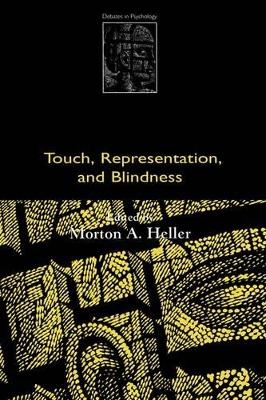
Touch, Representation, and Blindness
Seiten
2000
Oxford University Press (Verlag)
978-0-19-850387-3 (ISBN)
Oxford University Press (Verlag)
978-0-19-850387-3 (ISBN)
Psychological studies of touch and blindness have been fraught with controversy. This text brings together investigators from each area to present the evidence for their side of the debate. The concluding chapter draws together the views to summarize and resolve the situation.
Psychological studies of touch and blindness have been fraught with controversy. Within this field there remains an important theoretical divide. Many researchers have taken a cognitive approach to the study of touch and blindness, relating these to higher order processes, such as memory and concept formation. Others adopt a theoretical perspective, arguing that it not necessary to consider the 'internal representation' of the stimuli, when investigating touch - thus people make use of information from the physical biomechanical properties of their limbs as they assess the physical properties of objects. In addition, psychologists differ in the relative importance they place on the modality of sensory stimulation for subsequent perceptual experiences. Some psychologists argue that touch can do many of the things that are accomplished by vision, and claim that the mode of sensory stimulation is not critically important for perception, arguing that much information can be obtained through non-visual modalities. Others suggest that there are important consequences of a lack of visual experience, arguing for the importance of multiple forms of sensory input for conceptual development. New to the Debates in Psychology series, Touch, Representation, and Blindness brings together the leading investigators in these areas, each presenting the evidence for their side of the debate. An introductory chapter sets the theoretical and historical stage for the debate, and a concluding chapter draws together the different views and ideas set forth by the contributors, summarizing and resolving the discussion.
Psychological studies of touch and blindness have been fraught with controversy. Within this field there remains an important theoretical divide. Many researchers have taken a cognitive approach to the study of touch and blindness, relating these to higher order processes, such as memory and concept formation. Others adopt a theoretical perspective, arguing that it not necessary to consider the 'internal representation' of the stimuli, when investigating touch - thus people make use of information from the physical biomechanical properties of their limbs as they assess the physical properties of objects. In addition, psychologists differ in the relative importance they place on the modality of sensory stimulation for subsequent perceptual experiences. Some psychologists argue that touch can do many of the things that are accomplished by vision, and claim that the mode of sensory stimulation is not critically important for perception, arguing that much information can be obtained through non-visual modalities. Others suggest that there are important consequences of a lack of visual experience, arguing for the importance of multiple forms of sensory input for conceptual development. New to the Debates in Psychology series, Touch, Representation, and Blindness brings together the leading investigators in these areas, each presenting the evidence for their side of the debate. An introductory chapter sets the theoretical and historical stage for the debate, and a concluding chapter draws together the different views and ideas set forth by the contributors, summarizing and resolving the discussion.
Introduction: the theoretical context for the dialog ; Rotational invariants and dynamic touch ; Recognizing outline pictures via touch: alignment theory ; Modality and mind: convergent active processing in interrelated networks as a model of development and perception by touch ; Mental imagery in blind people: the role of passive and active visuospatial processes ; Conclusions: the San Marino discussion
| Erscheint lt. Verlag | 1.4.2000 |
|---|---|
| Reihe/Serie | Debates in Psychology |
| Zusatzinfo | line figures |
| Verlagsort | Oxford |
| Sprache | englisch |
| Maße | 156 x 234 mm |
| Gewicht | 358 g |
| Themenwelt | Geisteswissenschaften ► Psychologie ► Biopsychologie / Neurowissenschaften |
| Geisteswissenschaften ► Psychologie ► Pädagogische Psychologie | |
| Geisteswissenschaften ► Psychologie ► Test in der Psychologie | |
| Geisteswissenschaften ► Psychologie ► Verhaltenstherapie | |
| ISBN-10 | 0-19-850387-3 / 0198503873 |
| ISBN-13 | 978-0-19-850387-3 / 9780198503873 |
| Zustand | Neuware |
| Haben Sie eine Frage zum Produkt? |
Mehr entdecken
aus dem Bereich
aus dem Bereich
Grundlagen, Klinik, Rehabilitation
Buch | Softcover (2024)
Urban & Fischer in Elsevier (Verlag)
56,00 €
Buch | Spiralbindung (2022)
modernes lernen (Verlag)
29,95 €
Grundlagen, Klinik, Therapie und Verlauf der …
Buch | Softcover (2024)
Kohlhammer (Verlag)
84,00 €


